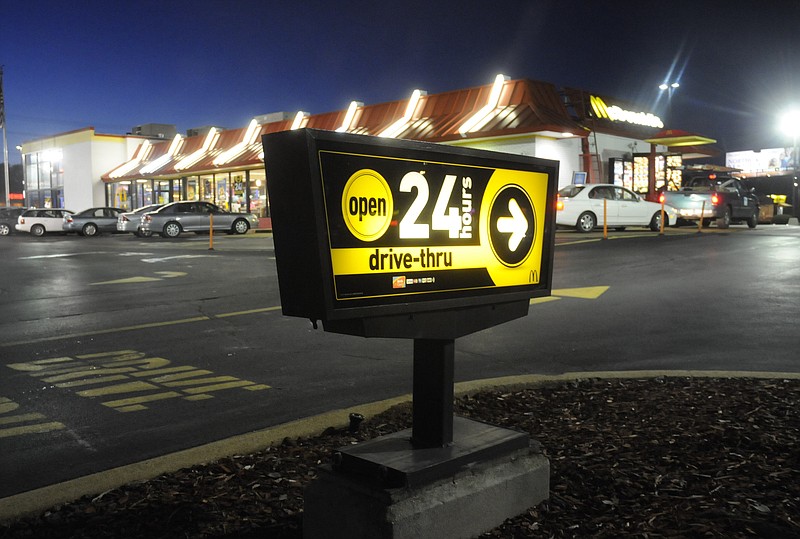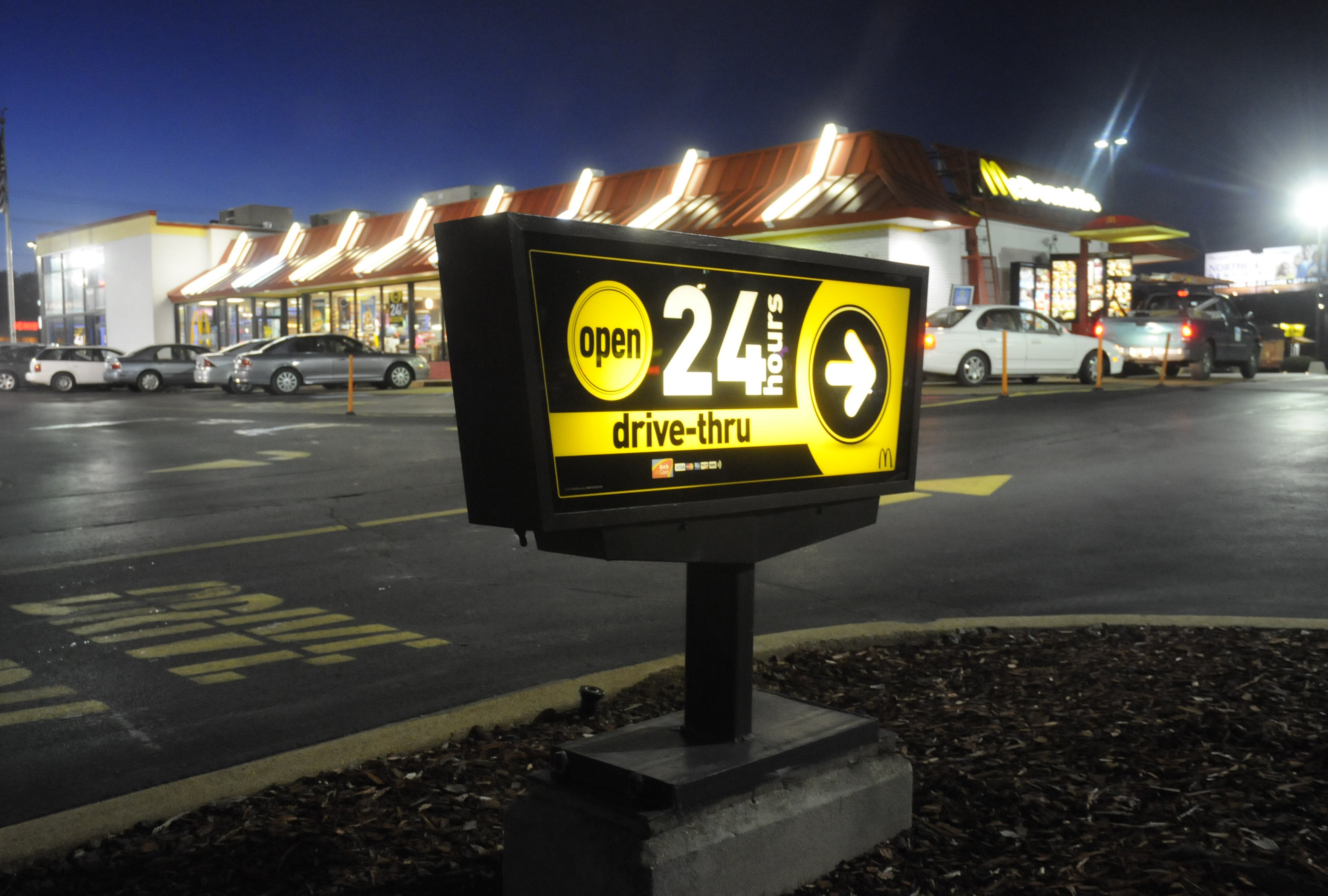RESTAURANT TRENDS• Restaurant eating declined 3 percent between 2007 and 2011.But restaurants sales grew 4 percent in the 1-4 a.m. period since 2007.• Today, the average consumer eats 195 meals at a restaurant over a year, compared to the peak rate of 215 in 2000.• Fast food places serve 27 percent of those eating late, second only to convenience stores which account for 34 percent.Source: The NPD Group
Sometimes when Jessica Dintsch gets home around midnight, she just wants a hamburger.
After working the night shift at KFC, the last thing she wants to do is cook. So three or four nights a week, she'll leave work, drive to her East Ridge home, change clothes and hop back in the car for a late-night McDonald's run.
"I'm hungry, and it's cheap," she said from her car as she waited in line at the East Ridge McDonald's drive-through just after midnight Thursday morning. "I can get full on three bucks."
The fast-food restaurant is conveniently located, she said, and one of the only places open when she gets off work.
Dintsch is just one of the many eaters helping the late-night sector of restaurant sales grow in an industry that has seen declines since the recession.
As long as restaurantgoers think like Dintsch, consumers could see an increase in late-night fast food options.
Restaurant eating declined 3 percent between 2007 and 2011, according to consumer marketing research firm The NPD Group. But meals between 1 a.m. and 4 a.m. grew 4 percent in the same period.
"The demands of the consumer are ever changing," said Art Holekamp, president of McDonald's Chattanooga advertising co-op. "In most restaurants, at least in Chattanooga, most everybody has extended their hours, either opening earlier or staying open later."
Only about 3 percent of restaurant meals are served in those early-morning hours, but when retailers see a growing market, they'll move to capture it. All-night restaurant service has been around for decades at diners, but fast-food restaurants only recently started increasing their 24-hour offerings.
Nationally, almost 40 percent of McDonald's serve food 24 hours a day, up from 30 percent in 2005, according to The Wall Street Journal. Burger King restaurants stay open until midnight on Fridays and Saturdays and until 11 p.m. the rest of the week.
Local fast-food restaurants still are feeling out whether Chattanooga wants all-night offerings. Fewer than a third of the 47 McDonald's in Holekamp's co-op, which stretches from Stevenson, Ala., to Murphy, N.C., have gone to 24-hour service, but several stores are moving that way.
Figuring out where the expanded schedule will succeed can be difficult. If a store sits on a major highway or near a constantly-operating factory, the decision can be easier; but restaurant owners often are best off testing different hours and seeing how customers respond.
"That's the easiest way to gauge demand - extend the hours and see what happens," Holekamp said. "There's not a science to this thing."
If there is a science to scheduling decisions, Gordon Davenport, Burger King franchisee for most of the stores within 50 miles of Chattanooga, said that science is largely uncharted territory.
None of his restaurants is open 24 hours a day, he said, but many are open 22 or 23 hours. His peak dinner period can go as late as 9 p.m., and the restaurants stay busy right up until midnight on weekends, he said. But it's not just the late-night market that is changing, he said. It's the way Americans eat.
"The notion that we eat lunch at noon and we eat dinner at 6 or 7 p.m., we definitely see those broadening," he said. "Eating habits have changed, and somehow that feeds into the 24/7 restaurant phenomenon."
But Harry Balzer, chief industry analyst for The NPD Group, said his consumer marketing research firm hasn't seen a significant change in the way people are eating, just a move toward more convenient eating.
"We really aren't eating more. We're choosing different places to consume food," he said. "The long-term question is, did you do something that made my life easier? Or did you do something that makes my food cheaper?"
For many fast-food restaurants, the answer to those questions is yes. Since the economy crashed, price and convenience have become even more important to the average eater.
So as restaurant markets decline, owners are ready to make whatever changes they can to capture more market share.
"It's fluid. What didn't work today may work six months from now," Holekamp said. "There are still patterns there, but they don't mimic the patterns of 30 years ago."

